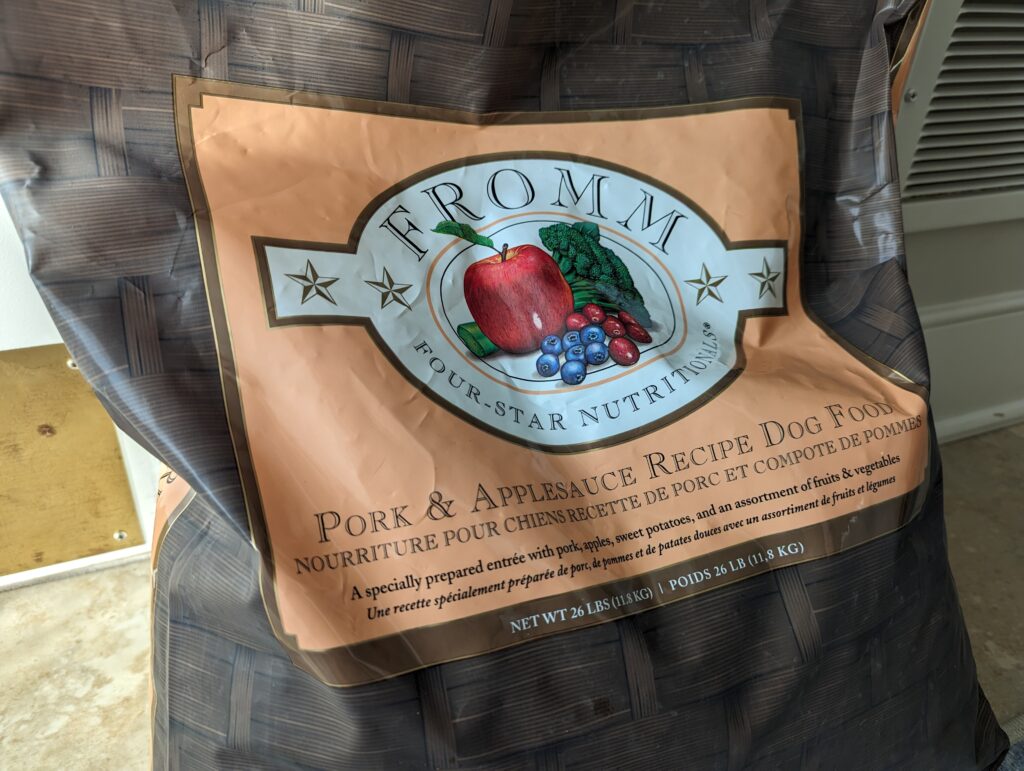Choosing the right food for your dog is crucial for their long-term health and well-being. The first step in making an informed decision is understanding how to read dog food labels. This article aims to break down all of the information on a dog food label and shed light on some of the “hidden” ingredients you should be aware of.
The Important Parts of Dog Food Labels
A typical dog food label will feature several key components every dog owner should understand:
- Product Name
- Net Weight
- Manufacturer’s Name and Contact Information
- Guaranteed Analysis
- Ingredient List
- Nutritional Adequacy Statement
Knowing what each of these terms means is essential for making an educated choice. Let’s dive into each of these below.
Decoding the Product Name
The Product Name on dog food labels is more revealing than you might think. For example, a food named “Potato and Salmon” is not the same as “Salmon and Potato.” The ingredients in the product name must be listed in order of weight.
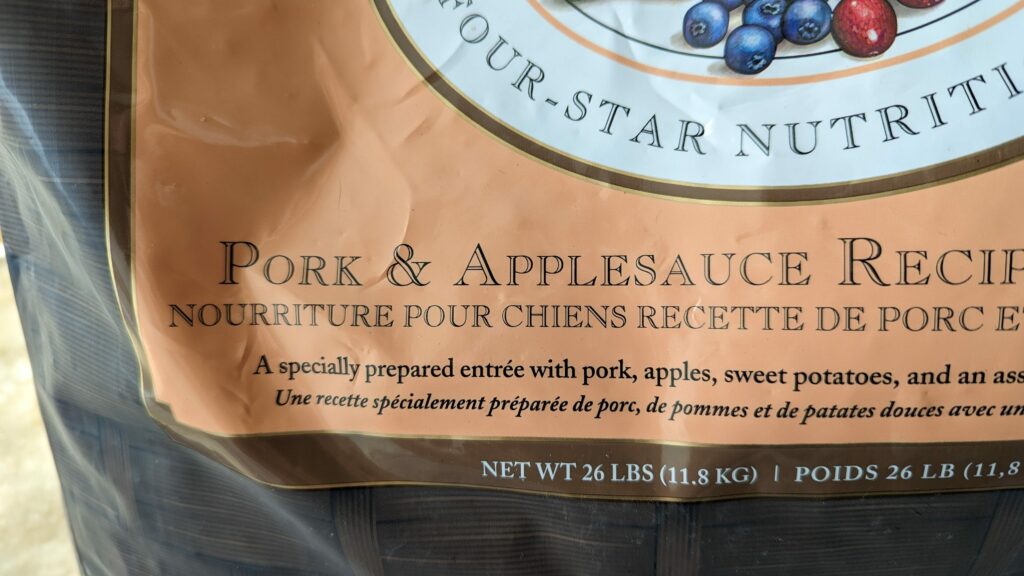
That means in “Potato and Salmon,” potato is the primary ingredient by weight, whereas, in “Salmon and Potato,” salmon takes precedence. Understanding this subtle difference can help you better understand the nutritional focus of the food.
Understanding Guaranteed Analysis
The Guaranteed Analysis section on the label outlines the minimum or maximum amount of nutrients like protein, fat, fiber, and moisture. This is a great place to quickly assess whether the food might be a good fit for your pet. However, these percentages can be misleading unless you consider the moisture content of the food.
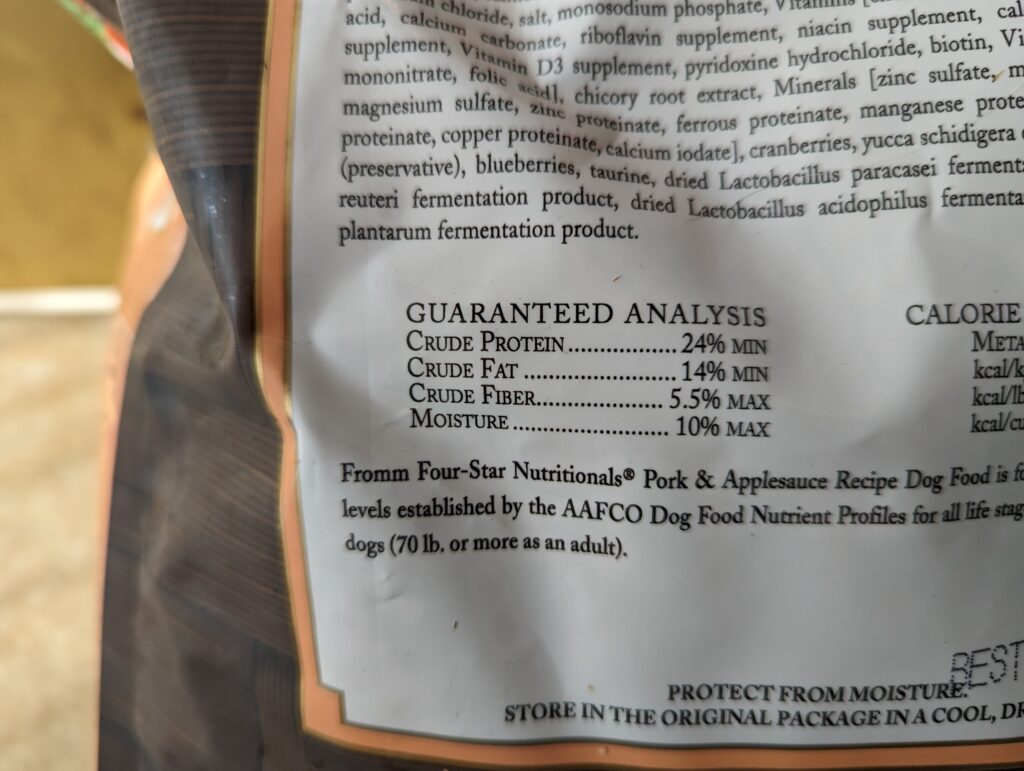
Dry Matter Basis
To make a fair comparison between dry and wet dog foods, you can convert the guaranteed analysis to a dry matter basis. This removes the moisture content from the equation.
For example, a dry dog food with 20% protein and 10% moisture is actually much less protein-dense than a wet dog food with 10% protein but 80% moisture.
Good and Bad Ranges
For a generally healthy adult dog, look for dry dog foods that contain around 18-25% protein and at least 10-15% fat. Levels outside these ranges could be red flags and warrant closer examination or consultation with a veterinarian.
Navigating the Ingredient List
The Ingredient List is where you’ll find the nitty-gritty details of what’s in your dog’s food. Ingredients are listed by weight, starting with the heaviest. High-quality proteins like chicken, beef, or fish should ideally be at the top of the list.
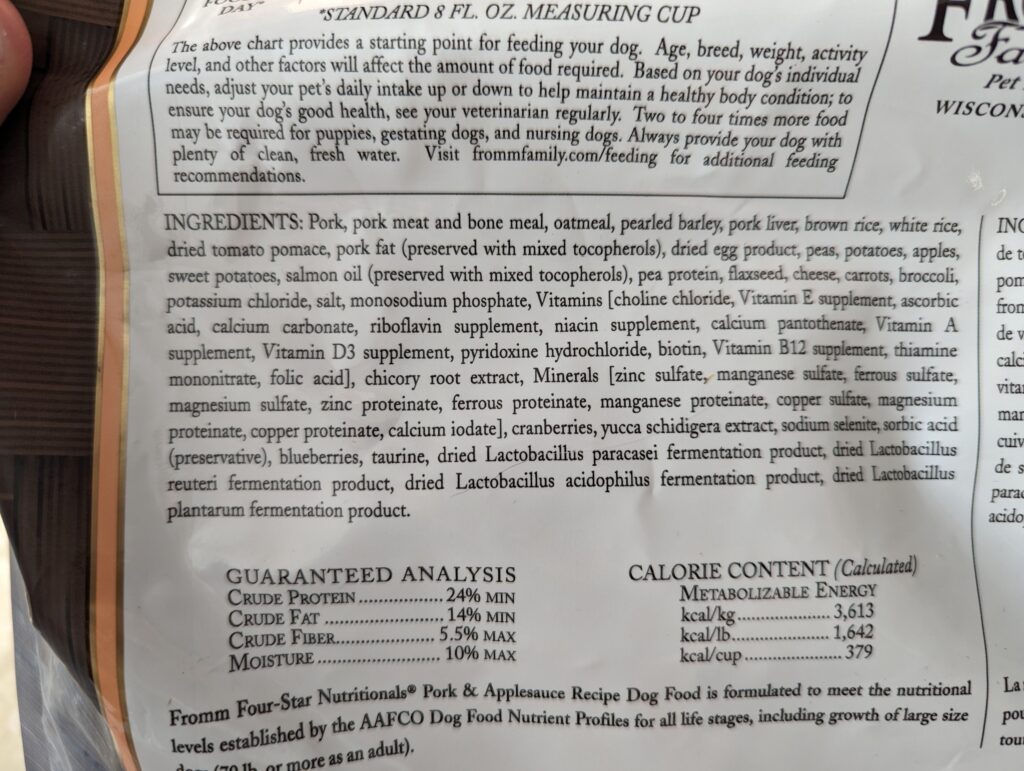
Cheap Fillers
Seeing these ingredients near the top of the list might be a red flag, as they are often considered cheap fillers:
- Corn
- Soy
- Wheat
- Meat by-products
- Bone meal
Other Red Flag Ingredients:
Seeing these ingredients in dog food is a red flag regardless of where in the ingredient list they show up. These are unnecessary additives that have no benefit to canines and can potentially be harmful.
- Artificial Colors (e.g., Red 40, Yellow 5)
- Artificial Preservatives (e.g., BHA, BHT)
- Artificial Flavors
- Sugar or Corn Syrup
- Propylene Glycol
Nutritional Adequacy Statement
One of the most overlooked yet important aspects of a dog food label is the Nutritional Adequacy Statement. This tells you whether the food is complete and balanced for a particular life stage or lifestyle according to the Association of American Feed Control Officials (AAFCO).
Here are some of the nutritional profiles established by AAFCO, and a few other common nutritional profiles you should know about:
- Growth: For puppies or pregnant/lactating females.
- Maintenance: For adult dogs.
- All Life Stages: Suitable for dogs from puppyhood through adulthood.
- Senior: Though not an official AAFCO category, some foods are formulated for older dogs and may claim to meet maintenance or all life stage profiles along with other specifications for senior dogs.
- Weight Management: Also not an official AAFCO category, but these foods claim to meet either growth or maintenance profiles while providing fewer calories.
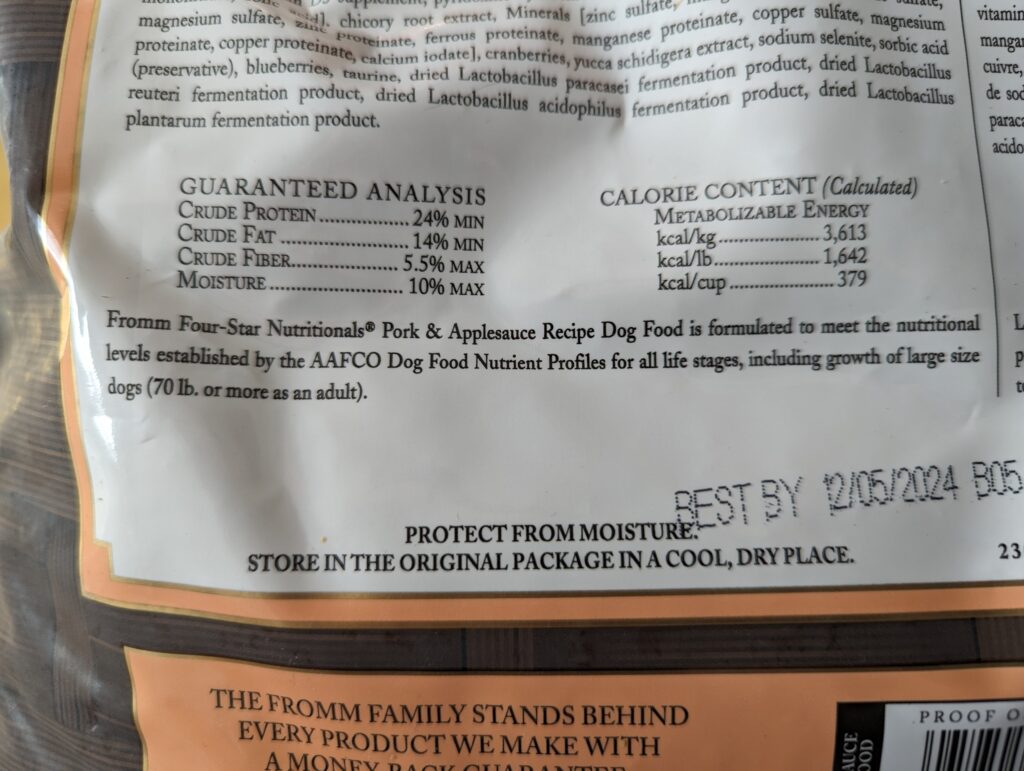
Special Cases: Grain-Free, Organic, and “Natural”
Terms like “grain-free,” “organic,” and “natural” are often used to market dog food, but it’s important to know what they actually mean.
- “Grain-free” indicates the absence of grains but not necessarily carbohydrates.
- “Organic” refers to how the ingredients are grown or produced
- “Natural” has no official definition and is largely a marketing term.
Deciphering Additional Information
Pay attention to the “best by” date for freshness and to ensure the food hasn’t expired. Feeding guidelines and caloric content can help you determine appropriate serving sizes for your dog. The manufacturer’s contact information is also valuable should you have any questions or concerns.
Special Dietary Concerns and Consultation
If your dog has specific health concerns like allergies or a medical condition, consult your veterinarian before making any changes to their diet. Tailoring the food to meet individual health needs is often necessary and beneficial.
Reading and understanding dog food labels can seem daunting, but it’s an essential skill for responsible pet owners. By paying attention to key components like the ingredient list and guaranteed analysis, you can make better-informed decisions for your dog’s dietary needs.

